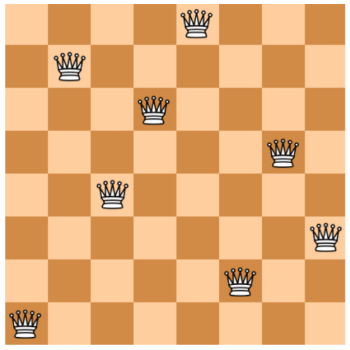We use cookies on this site to enhance your experience.
By selecting “Accept” and continuing to use this website, you consent to the use of cookies.
Search for academic programs, residence, tours and events and more.
April 9, 2025
Print | PDFWhen Wilfrid Laurier University Professor Ilias Kotsireas asked students in his fourth-year Computer Science class, CP468 Artificial Intelligence, to solve a 150-year-old math problem, Jason Van Humbeck took up the challenge. Through a lot of experimentation, Van Humbeck was able to create an algorithm that significantly surpassed Kotsireas' expectations.
“I really enjoy using technology to break down problems and try to find innovative solutions,” says Van Humbeck, a Bachelor of Business Administration and Computer Science double-degree student. “Approaching challenges from both technical and business angles allows me to develop unique strategies that might not be immediately obvious to others.”
In class, Kotsireas pledged an automatic A+ to any student who could solve the n-queens problem to 1 million. Van Humbeck solved the problem to an astonishing 1 billion, something Kotsireas had not seen in his 15 years teaching the problem at Laurier.
First published in 1848 by Max Bezzel, the eight queens problem – the predecessor of the n-queens problem – asked if eight queens could be positioned on an eight-by-eight chess board without any of the queens being able to attack each other. The queen is the most powerful piece on the board and can move freely in each direction, including diagonally.

The eight queens problem has evolved over time into the n-queens problem, where n equals the dimensions of the board, as well as the number of queens. It has been embraced by computer scientists to demonstrate the effectiveness of constraint satisfaction algorithms.
Constraint satisfaction algorithms have a wide range of practical applications across industries including supply-chain management, shipping and logistics, and event scheduling. A university might use a similar algorithm to generate classroom or exam schedules.
The challenge posed by Kotsireas required that 1 million queens be placed on a 1 million by 1 million square chess board with no conflicts. A few students were able to successfully solve for 1 million with a compute time of roughly an hour, the length of time the students’ algorithms ran to successfully solve the problem. Van Humbeck’s solution solved for 1 billion with a compute time of just three minutes.
“He got passionate about this problem, went and read research papers and significantly expanded the scope of the assignment,” says Kotsireas. “This is something I might expect from a professional programmer, but from an undergraduate student it’s pretty amazing.”
Kotsireas believes that with access to a more powerful machine like Sharcnet, a research supercomputer cluster co-founded by Laurier that is shared by a consortium of Ontario colleges and universities, Van Humbeck could really test the limits of his algorithm.
“He ran the algorithm for only three minutes. What if he were to run it for three days?” says Kotsireas. “I think he can find solutions for a lot more than a billion. Who knows?”
Van Humbeck is curious to test his algorithm further. However, he is cognizant of the negative environmental impact of supercomputers, which require significant power and cooling resources.
“It would be cool to test the theory and maybe see the limits, but I feel like from an ethical standpoint it doesn’t provide any betterment to society,” Van Humbeck says. “I'd rather save that energy for other projects where there’s more of a functional use case.”
Van Humbeck is excited to undertake more learning in Kotsireas’ lab, where he will be working on research opportunities and looking for high-impact problems.
“There are a lot of problems in business and computer science that I want to solve,” says Van Humbeck. “Hopefully I can use the skills I've learned at Laurier to run a successful, large-scale startup.”
See Jason’s n-queens solution on his Github page.